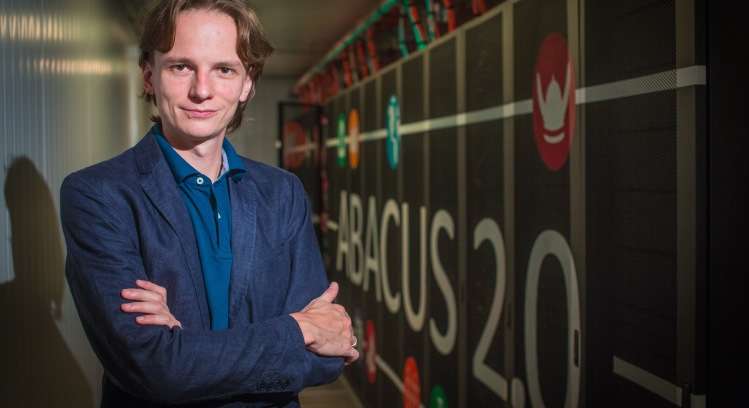Aging simulation finds dangerous molecule activity

Every time we breathe, we bring crucial oxygen into the body. However, a very small part of this oxygen may be converted to so-called free radicals, which have the ability to damage our cells. The older we become, the more our cells are damaged, and thereby also our organs, muscles, etc.
Free radicals also have great significance concerning aging and thus, understandably, attract great scientific interest.
Researchers Ilia Solov'yov and Peter Husen are trying to understand how free radicals form. Their interest is not only medica; they are just as much concerned with the opportunities that computer power holds concerning analysis of extremely complex biological systems – such as the formation of the special group of free radicals called superoxides.
"We wanted to find out exactly which factors lead to the formation of these superoxides. We knew as much that the formation occurs in a cluster of proteins but the rest was a mystery. And of course, it is interesting to find out the details, because it is only when we know them that we can hope to be able to control and perhaps even prevent the formation of superoxides," says Ilia Solov'yov who is an associate professor and head of the Quantum Biology and Computational Physics Group at SDU.
Together with postdoc Peter Husen from the same research group, he fed the Danish super computer Abacus molecular biological data and asked it to make a simulation of what is going on inside the relevant cluster of proteins that leads to the formation of superoxides.
"The simulation showed us that an oxygen molecule can penetrate and reach specific locations in the cluster of proteins where, potentially, it can absorb an extra electron and thus turn into superoxide. This cannot be observed with a regular microscope, and therefore, this process has so far been unknown."
The scientists' next step is to examine whether it is possible to prevent the oxygen molecule from entering the protein cluster and initiate the formation of the harmful superoxides.
Provided by Syddansk Universitet


















